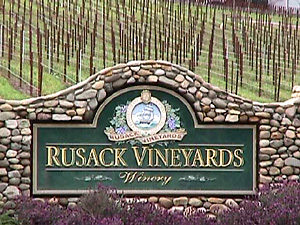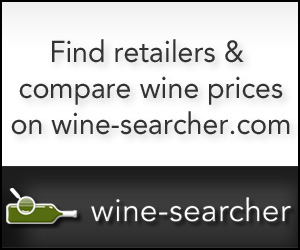|
The last rosé of summer Sometimes I envy my friends who really enjoy pink wines and slurp them all summer, finding relief from the heat in their crisp, chilly freshness. No lectures, please ... I know this is a personal issue. To put it provocatively for the sake of debate, pink wine is a mere compromise, a wine made by the almost apologetic process of passing red grapes only briefly through the fermenter but discarding them before they've had a chance to deliver the flavor that nature gave them. Unable to decide whether it wants to be red or white, it rarely delivers the body, complexity and flavor interest that I look for in wine. If I want something cold and refreshing to drink, I'll save my alcohol allocation for another time and knock back a tall glass of iced tea. (And I'm talking about dry pink wine. The rosé category is further confused by sweet, low-acid White Zinfandel and other "blush" wines, a completely different style that bedevils consumers who like "blush" but don't like dry rosé - or vice-versa - and can't always tell which is which from the label.) But there's an exception to just about every rule, and the other night at dinner I had the pleasant experience of encountering a rosé that I really liked. It was my pleasure to meet Ricardo Ullrich, the friendly U.S. Sales Director for Viña La Rosa, a Chilean producer, who joined a group at dinner and came with a sample of the firm's brand-new La Palma 2004 Merlot-Cabernet Rosé, a vibrantly noteworthy pink wine that seemed just right for a warm September evening. Call it the last Rosé of summer. Following are my notes on that wine, with a bonus report on another offering from Viña La Rosa, a Cabernet Sauvignon of real character. Both wines are from the winery's vineyards in Chile's Cachapoal Valley, which with the more familiar Colchagua Valley makes up the Rapel vine-growing region south of Santiago.
TALK ABOUT WINE ONLINE If you prefer to comment privately, feel free to send me E-mail at wine@wineloverspage.com. I'll respond personally to the extent that time and volume permit. These wines were tasted in a restaurant setting. I regret that label photos aren't available. Prices listed are the winery retail; the Cabernet Sauvignon was available from the restaurant wine list (L&N Wine Bar in Louisville) at $3.25 for a 2-ounce taste, $9.50 for a 6-ounce glass or $37 for a bottle. Viña La Rosa 2004 La Palma Cachapoal Valley Rosé ($8)This exceptionally appealing rosé, a blend of 70 percent Merlot and 30 percent Cabernet Sauvignon, is a beautiful clear light cherry color. Fresh red-berry fruit aromas lead into a surprisingly full flavor in a fruity but dry rosé that presents much of the structure you might expect in a red wine, with texture and body suggesting relatively high alcohol. Juicy berries and fresh acidity persist in a long finish. Importer: Independently distributed in various states of the U.S. and widely available in the UK. Check the winery Website under "Our Products" for distributors, or ask local retailers. (Sept. 11, 2004) FOOD MATCH: A food-friendly wine, it showed well both as an aperitif and as an accompaniment to a diverse selection of appetizers and main courses, from creamy lobster bisque and a gourmet-style spin on fried green tomatoes to a stylish "vegetable Wellington" with grilled veggies in puff pastry on a sweet-tart red and yellow bell pepper coulis. VALUE: Rosé is rarely expensive, and this one significantly exceeds its modest price point. WHEN TO DRINK: It won't fade overnight, but rosé shows its best in youth, and this sparkling-fresh wine of the Spring 2004 harvest in Chile will reward early consumption.
PRONUNCIATION:
WEB LINK: Viña La Rosa's Website, available in Spanish and English, re-sizes your browser to show a "Flash" movie; it's best viewed with a fast computer on a high-speed connection.
FIND THIS WINE ONLINE: Check out prices and vendors for Viña La Rosa on Wine-Searcher.com, This dark-garnet wine shows a classic Cabernet aroma and flavor profile of cassis (blackcurrant) and herbs, full and structured, with smooth but substantial tannins and good acidity to balance the fruit, suggesting good aging potential. Red meat helps ameliorate the tannins for early consumption; flavors open up and the tannic astringency mellows as the wine airs in the glass. Importer: Independently distributed in various states of the U.S. and widely available in the UK. Check the winery Website under "Our Products" for distributors, or ask local retailers. (Sept. 11, 2004) FOOD MATCH: A red-meat wine, perfect with a restaurant course of strip steak grilled medium rare, with a Point Reyes blue cheese and red-wine reduction. VALUE: As one of the higher-quality Chilean Cabernets I've tried, competitive with good Cabs from California or Australia, its $20 suggested retail price is more than fair. WHEN TO DRINK: Clearly cellar-worthy, with good potential for improving over the next five to 10 years. For Website and sourcing information, see the tasting report above. 
California Wine Club: For nearly 15 years, members have told us that a gift of wine from The California Wine Club makes a memorable holiday gift for business associates and a tasteful referral gift for the medical community. We are now excited to introduce a program that benefits the Gift Giver. Our Corporate Rewards Program combines high quality wines and exceptional customer service with substantial savings and benefits just for you.
If you plan on sending holiday gifts this year, you may find it valuable to review The California Wine Club's Corporate Rewards Program at
For a fun and unique gift, or to experience a monthly wine adventure for yourself visit This week on WineLoversPage.com Here are links to some of our recently published articles that I think you'll enjoy:
• Oxford Town Wine: Genetically modified vines - science vs. tradition?
• Schaefer on Wine: On course for quality at Rusack
• Wine Lovers' Discussion Group: "Tier system" for Rioja Last Week's Wine Advisor Index The Wine Advisor's daily edition is usually distributed on Mondays, Wednesdays and Fridays (and, for those who subscribe, the FoodLetter on Thursdays). Here's the index to last week's columns:
• U.S. drinking more wine (Sept. 10, 2004)
• Meeting a Rhone Ranger (Sept. 8, 2004)
• Reorganizing the wine shop (Sept. 6, 2004)
• Complete 30 Second Wine Advisor archive:
• Wine Advisor FoodLetter: More rolled food (Sept. 9, 2004)
• Wine Advisor Foodletter archive:
SUBSCRIBE: Administrivia To subscribe or unsubscribe from The 30 Second Wine Advisor, change your E-mail address, or for any other administrative matters, please use the individualized hotlink found at the end of your E-mail edition. If this is not practical, contact me by E-mail at wine@wineloverspage.com, including the exact E-mail address that you used when you subscribed, so I can find your record. We do not use our E-mail list for any other purpose and will never give or sell your name or E-mail address to anyone. I welcome feedback, suggestions, and ideas for future columns. To contact me, please send E-mail to wine@wineloverspage.com All the wine-tasting reports posted here are consumer-oriented. In order to maintain objectivity and avoid conflicts of interest, I purchase all the wines I rate at my own expense in retail stores and accept no samples, gifts or other gratuities from the wine industry.
Monday, Sept. 13, 2004 |





